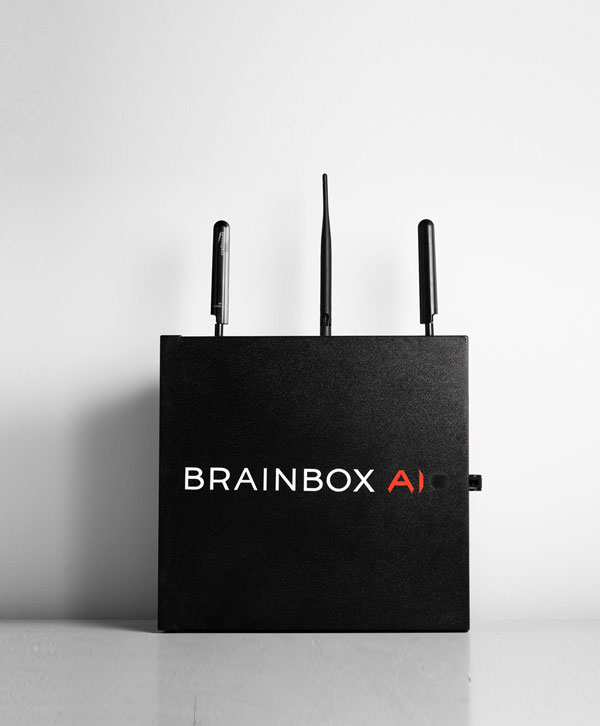Autonomous artificial intelligence (AI) technology is being piloted at a highrise commercial office and separate multi-residential buildings managed by GWL Realty Advisors in downtown Toronto with early results showing there’s been a marked decrease in energy consumption and carbon emissions by the structures.
The technology, developed by Montreal-based BrainBox AI, uses deep-learning, cloud-based computing, algorithms and a proprietary process to support a 24/7 self-operating heating, ventilation and air-conditioning (HVAC) system that requires minimal human intervention and leads to better energy efficiency and less emissions.
“Today’s buildings are responding to what’s happening right now,” explains BrainBox president Sam Ramadori. “You go over your set point of 24 and something engages.
“The real exciting part about AI is that it’s very good at predicting the future. It’s looking at what’s happening in a building and taking all of that data from the building. But then, to that we’re adding outside data like weather information, we’re bringing in occupancy, and looking at the utility rate of the structure, your utility costs and time-of-day pricing and marrying that data together, all to predict the future.”
The heart of the system is a one-foot-by-one-foot black box. It’s usually installed in the same room as the HVAC control system of a building. The box transmits data to the cloud where the BrainBox proprietary process analyzes the information and commands are sent to the HVAC system of the building.

“That box is like the plumbing,” explains Ramadori. “It creates the communication between the building and the cloud. We’re getting weather information from somebody else, electricity and carbon-intensity data, and marrying all this data together for the AI to learn that building and then optimize it.”
The AI, for example, takes into account such things as how many people are in the building to figure out ahead of time what the HVAC system should be doing.
“AI can predict for each zone in the building what’s going to happen for the next six hours with 99 per cent accuracy,” says Ramadori. “You’re giving it a perfect view to the future so you open up all kinds of opportunities.”
BrainBox launched the product two years ago in Montreal and the technology is now installed in several downtown buildings in Toronto. Because of an agreement with the customer, the two GWL Realty properties must remain unnamed. However, the technology was installed in each highrise last year.
The technology has been installed in more than 160 buildings and is currently impacting more than 100 million square feet of real estate across 16 countries. It was recognized by TIME in 2020 as one of the top-100 best inventions of the year.
The box itself takes less than three hours to install. Most of the work takes place offsite after the installation.
“We take the data and feed it to the AI and the process begins,” says Ramadori. “The AI has a learning process from the moment the box is plugged in. It takes about eight to 10 weeks for it to learn and then we get into autonomous mode where the AI is actively controlling the building in real time with no human intervention.”
The pilot at the Toronto office tower saw HVAC energy consumption reduced by 25 per cent, with an expected carbon emissions reduction of 218 metric tons per year. Energy savings on HVAC at the multi-residential building was reduced by 29 per cent, with an expected carbon emissions reduction of 180 metric tons per year.
HVAC systems are one of commercial real estate’s leading contributors to energy usage, accounting for 45 per cent of buildings’ energy consumption.
The technology is generating savings that typically would have required a major upgrade of HVAC equipment or recommissioning of the control system, says Ramadori. Of equal importance, the equipment is being run more efficiently with less starts and stops and for fewer hours, so it has a longer life.
“What we do is achieve those savings at a far lower cost. We’re installing one device that connects to the HVAC control system and connects to the cloud so it’s one black box.”
Ramadori says the technology is much like a self-driving car and it takes a bit of nerve at the beginning to adopt AI.
He is grateful for early adopters like GWL that are helping to pave the way for the real estate industry and believing in the value it can generate.
“At BrainBox AI, we believe that supporting real estate organizations in meeting and even exceeding their energy and sustainability objectives without sacrificing financial gain is the only way we are going to make real progress towards our global carbon emission reduction goals,” says Ramadori.
Glenn Way, executive vice-president and chief operating officer of GWL, says the company is focused on evolving its sustainability platform to meet the demand for smarter, climate-resilient, more sustainable and healthier buildings for tenants and residents.
“Innovation plays a key role in this effort,” he stated. “We’ve seen great results in our pilot projects with BrainBox AI thus far and are currently evaluating other assets where we can implement this technology.”











Recent Comments